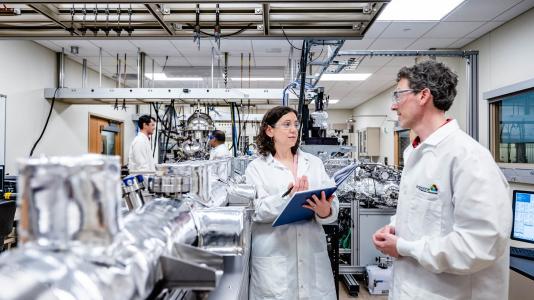
Center for Steel Electrification by Electrosynthesis
C-STEELSteel is a critical material that impacts numerous aspects of our lives, including transportation (cars, trucks, airplanes), construction (buildings), and more. The current steel production process contributes to a large percentage of total global greenhouse gas emissions from the industrial sector.
The most energy-intensive step in steel production involves converting iron ore into purified iron metal or iron alloys using blast furnaces. This demands temperatures of 2500 to 2700 degrees Fahrenheit. The center’s target is to develop a process that will essentially eliminate that heat demand, achieving an 85% reduction in greenhouse gas emissions by 2035.
One of 11 new Energy Earthshot Research Centers funded by the Department of Energy, C-STEEL will be investigating an electrodeposition process that utilizes electricity to initiate a reaction and deposit a usable iron metal at much lower temperatures than existing processes.
The project has three thrusts. Two of them will investigate different processes for electrodeposition. One process will operate at or near room temperature using water-based electrolytes. The other will use a salt-based electrolyte and will function at temperatures of 400 to 800 degrees Fahrenheit, nearly 2000 degrees below current blast furnaces. The energy for this process is low enough that it could be provided by renewables or waste heat from a nuclear reactor.
C-STEEL is a multi-institutional effort partnering with Oak Ridge National Laboratory, Case Western Reserve University, Northern Illinois University, Purdue University Northwest, and the University of Illinois Chicago.
This project is under the DOE’s Industrial Heat Energy Earthshot initiative, which seeks to reduce emissions from the energy-intensive process of industrial heating. This groundbreaking research is being funded by the DOE Office of Basic Energy Sciences and the DOE Advanced Scientific Computing Research program.




